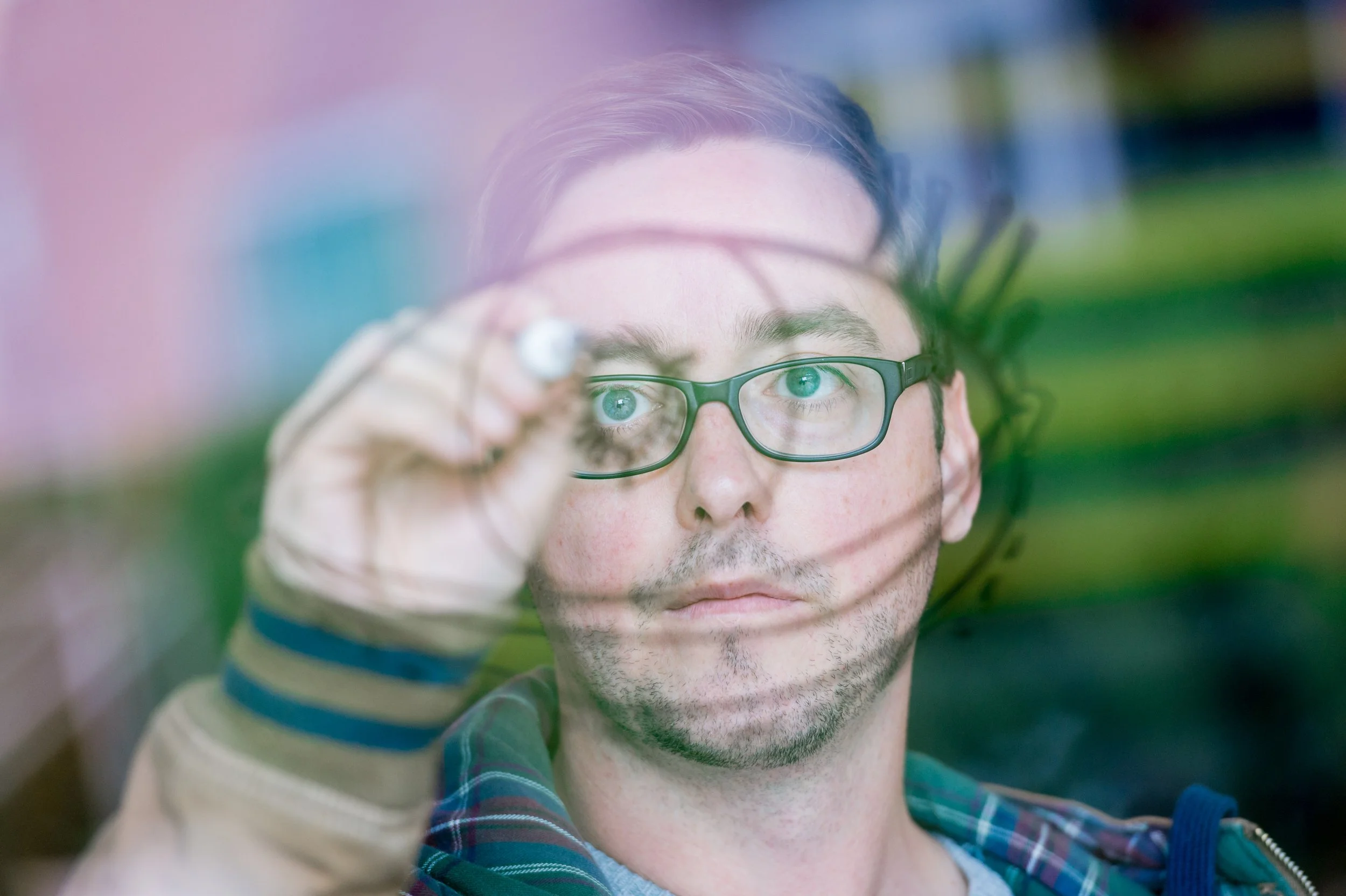In the early 2000s, Campbell worked with the Trailer Park Boys in Halifax and starting in 2003, spent 4 years at the Banff Centre for the Arts, beginning as a work-study and later the Lead Designer for the online digital arts + culture magazine, Horizon Zero.
In 2008, after several years of freelance interactive design and animation, Campbell joined Switch United as their youngest Art Director at 29 years old. He co-created interactive installations for the Vancouver 2010 Olympics and in December 2010, he was awarded Best Interactive Designer at the Canadian New Media Awards in Toronto, Ontario.
Campbell completed an MAA with distinction at the Emily Carr University of Art + Design in 2012 and where he received the Governor General’s Gold Medal for Academic Excellence. He has presented and exhibited internationally.
After 4 years of teaching in the Digital Design Program at the Vancouver Film School, Campbell has since joined as faculty at the University of British Columbia: Okanagan and teaches media arts and design in the Visual Arts program.
Educator / Artist / Designer in Kelowna, BC
Myron Campbell
Artist Statement
Voice is a quality that is normally recognized in literary works, but I cultivate it in my stories even though the medium is visual. Every medium has its own grammar, its own form of literacy.
Just as an author of a novel seeks their own voice, so too do I search for my voice within my visual narratives.
I create with the belief that visual media is distinct from literary media, and that the specific medium I work in also is distinct from such hybrid forms as comics, movies and cartoons. I seek to use a form of narrative that is peculiar to my medium, which is interactive animation and installation, using mixtures of two and three- dimensional elements, with various interdisciplinary components.
The stories that I tell lean toward the fantastic as a nod to a tradition and as an exploration of both memories and dreams. Collage is quite important as a creative choice because this process allows to construct and then to deconstruct and then to reconstruct an image in a way that resembles the course of an appearance and then interpretation and then depiction of both dreams and memories.
This is partly for the sake of taking aspects of my history that are constitutive of my personality and creative sensibility, and making my own mythic fables of transformation out of them.
These mythical vignettes are meant to both reveal a quirk that’s individual, and to implicate the viewer/user into a kind of a relationship of consequence with the work.
Because of their interpretative openness, visual fables have the capability to go beyond my own intention, and I welcome that as evidence of it gaining its own spirit, becoming like a totem, its own self-determined entity, which then can implicate me just as much as any member of the audience and displace some sense of my propriety and gain freedom from a part of my control as the creator. In this way I hope that I at least can be engaged or entertained, if not humbled, by my own creation.
The idea, then, is to create works of art that become their own creation, just as the children that we make become their own persons.


